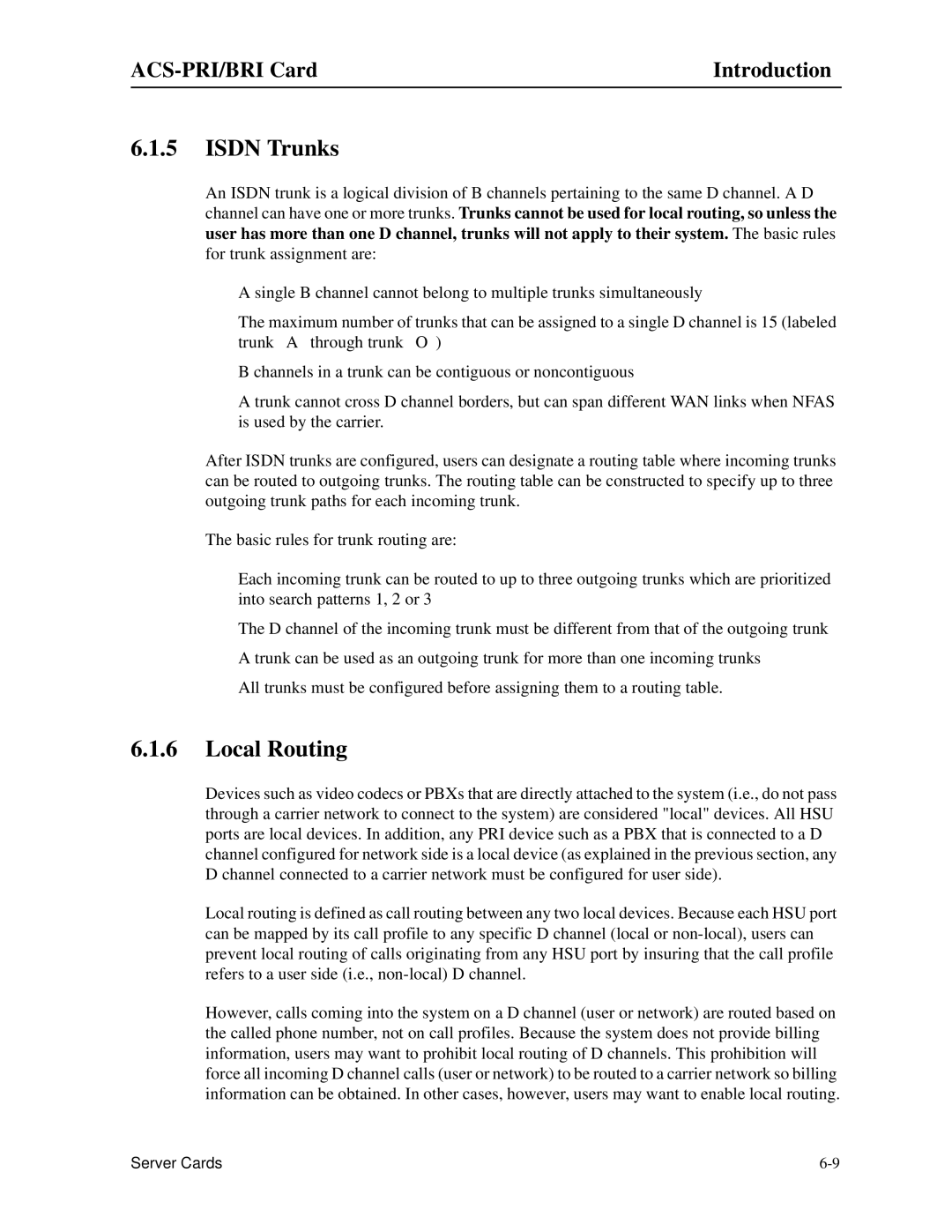| Introduction |
6.1.5ISDN Trunks
An ISDN trunk is a logical division of B channels pertaining to the same D channel. A D
channel can have one or more trunks. Trunks cannot be used for local routing, so unless the user has more than one D channel, trunks will not apply to their system. The basic rules for trunk assignment are:
•A single B channel cannot belong to multiple trunks simultaneously
•The maximum number of trunks that can be assigned to a single D channel is 15 (labeled trunk “A” through trunk “O”)
•B channels in a trunk can be contiguous or noncontiguous
•A trunk cannot cross D channel borders, but can span different WAN links when NFAS is used by the carrier.
After ISDN trunks are configured, users can designate a routing table where incoming trunks can be routed to outgoing trunks. The routing table can be constructed to specify up to three outgoing trunk paths for each incoming trunk.
The basic rules for trunk routing are:
•Each incoming trunk can be routed to up to three outgoing trunks which are prioritized into search patterns 1, 2 or 3
•The D channel of the incoming trunk must be different from that of the outgoing trunk
•A trunk can be used as an outgoing trunk for more than one incoming trunks
•All trunks must be configured before assigning them to a routing table.
6.1.6Local Routing
Devices such as video codecs or PBXs that are directly attached to the system (i.e., do not pass through a carrier network to connect to the system) are considered "local" devices. All HSU ports are local devices. In addition, any PRI device such as a PBX that is connected to a D channel configured for network side is a local device (as explained in the previous section, any D channel connected to a carrier network must be configured for user side).
Local routing is defined as call routing between any two local devices. Because each HSU port can be mapped by its call profile to any specific D channel (local or
However, calls coming into the system on a D channel (user or network) are routed based on the called phone number, not on call profiles. Because the system does not provide billing information, users may want to prohibit local routing of D channels. This prohibition will force all incoming D channel calls (user or network) to be routed to a carrier network so billing information can be obtained. In other cases, however, users may want to enable local routing.
Server Cards |
